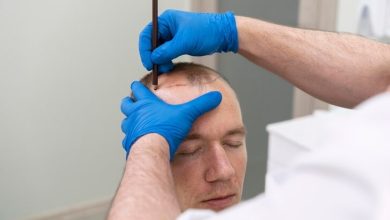Do Men Get Cellulite? Exploring the Truth about Cellulite

Do men get cellulite? This is a question that many people wonder about, as cellulite is often seen as a woman’s issue. However, cellulite can affect both men and women, although it is less common and visible in men.
Cellulite is a cosmetic condition that causes skin dimpling or puckering, especially on the thighs, buttocks, and stomach. Fat cells push up on the connective tissue beneath the skin, causing an uneven surface or dimpling effect. This article will explore the causes, risk factors, myths, facts, and treatment options for cellulite in men and women. We will also share tips on preventing and reducing its appearance and improving your self-esteem and confidence.
What is Cellulite?
Cellulite is not a disease or a sign of poor health. It is simply a cosmetic issue that affects how the skin looks. Cellulite occurs when fat cells push up against the connective tissue under the skin, creating an uneven surface or dimpled effect.
The connective tissue is made of collagen and elastin fibers that provide structure and elasticity to the skin. When these fibers become weak or damaged, they allow the fat cells to bulge through, creating the appearance of cellulite.

What Causes Cellulite?
Cellulite can affect anyone, regardless of age, weight, or body type. However, some factors can increase the risk or severity of cellulite, such as:
- Gender: Cellulite affects significantly more women than men. Cellulite appears in the majority of women after puberty.
Cellulite often affects areas where fat accumulates in women’s bodies, including the thighs, hips, and buttocks.
Women also have thinner skin and less collagen than men, which makes cellulite more visible. Men have thicker skin and more muscle mass, which helps to smooth out the fat layer and hide cellulite. However, men can still develop cellulite, especially with excess body fat, low testosterone levels, or hormonal imbalances.
- Genetics: Cellulite can run in families, as some people inherit genes that affect their skin thickness, elasticity, fat distribution, and metabolism. You are also more likely to have cellulite if your parents or siblings have it.
- Lifestyle: Cellulite can be influenced by your diet, exercise habits, smoking status, and stress levels.
A healthy diet rich in fruits, vegetables, lean proteins, and healthy fats can help prevent excess fat accumulation, improve blood circulation, and improve skin health. Regular exercise can help tone your muscles and burn calories, reducing cellulite’s appearance.
Smoking can damage your skin and blood vessels, which can worsen cellulite. Stress can trigger the release of cortisol, a hormone that promotes fat storage and breaks down collagen.
- Age: Cellulite can become more noticeable as you age, as your skin loses its elasticity and firmness. The fat cells also tend to enlarge with age, making them more visible through the skin.
Common Fallacies and Facts About Cellulite
Many myths and misconceptions about cellulite can make people feel ashamed or hopeless about their condition. Here are some common myths and facts about cellulite that you should know:
- Fallacy 1: Only Women Develop Cellulite
- Fact: As mentioned earlier, men can also develop cellulite, although it is less common than women. Men with low testosterone levels, hormonal imbalances, or excess body fat are more prone to cellulite. Male cellulite usually appears on the abdomen, chest, or lower back.

- Fallacy 2: Cellulite is Caused by Toxins in Your Body
- Fact: Cellulite is not a result of toxins or impurities in your body. It is simply a normal variation of how your body stores fat under your skin. No scientific evidence shows that detox diets or products can eliminate or reduce cellulite.
- Fallacy 3: Only Overweight People Have Cellulite
- Fact: Cellulite can affect people of any weight or body shape. Even slim or fit people can have cellulite if they have a high percentage of body fat or weak connective tissue. Losing weight can help reduce the amount of fat under your skin, but it may not eliminate cellulite.
Treatment Options for Cellulite
If you have cellulite, you’re not alone. Most people have some degree of cellulite, as it is a natural part of how your body stores fat. However, some treatments can help improve its appearance temporarily or over the long term. These include:
- Surgery: Liposuction is a surgical procedure that removes fat from specific areas of your body, such as your thighs, buttocks, or stomach. It can help reduce the amount of fat under your skin but may not affect the connective tissue or the skin’s texture. Liposuction can sometimes make cellulite look worse by creating irregularities or sagging in the skin. Furthermore, this procedure is expensive, invasive, and may have risks or side effects.
- Laser Treatments: Laser treatments use light energy to heat the fat cells and stimulate collagen and elastin production in the skin. This can help shrink the fat cells and tighten the skin, reducing the generation of cellulite. Laser treatments are non-invasive and relatively painless, but they require multiple sessions and can be costly.
- Red Light Therapy: Red light therapy is a phototherapy that utilizes low-level red light to enter the skin and activate cellular activity. This can help to improve blood circulation, reduce inflammation, increase collagen production, and break down fat cells, which can improve the appearance of cellulite.
Red light therapy is safe, painless, and affordable but requires multiple sessions and may not have lasting results.
Red light therapy is one of the most promising treatments for cellulite because it works on different aspects of its cause and appearance. It can help reduce the size and number of fat cells, strengthen the connective tissue that holds them in place, and improve the quality and texture of your skin.If you want to try red light therapy for cellulite, you can find different devices that offer this service. Some are full-body devices that can treat large areas at once. while others are handheld devices that can target specific spots. You can also buy red light therapy devices for home use, but follow the instructions carefully and talk to your doctor before starting any treatment.Red light therapy is not a magic solution for cellulite, but it can be a helpful addition to your overall wellness routine.
Conclusion:
Cellulite is a common and harmless skin condition affecting millions worldwide, especially women. Fat cells push through the fragile connective tissue under the skin, resulting in a lumpy and uneven appearance.
Cellulite is not a sign of poor health or obesity but can lower self-esteem and confidence. Some factors that can contribute to cellulite are your gender, genes, lifestyle, and age.
Various treatments promise to reduce or eliminate cellulite, such as surgery, laser, or red-light therapy. However, not all are effective or safe for everyone, and they can be expensive or invasive. Adopting a healthy lifestyle with a nutritious diet, regular exercise, and less stress and depression is the best way to prevent or improve cellulite.
These habits can help you maintain a low body fat percentage, a strong muscle tone, and healthy and elastic skin. Among the available treatments, red light therapy is the best option for cellulite as it is natural, painless, and affordable. Red light therapy can stimulate collagen production, improve blood circulation, and reduce inflammation in the affected areas, resulting in smoother and firmer skin.




